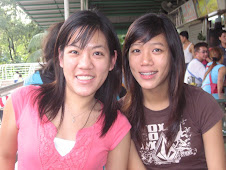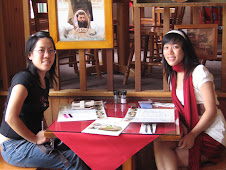

yusoff nasi baryani @ geylang serai
when i mentioned to victor about my failed attempts to locate the nasi briyani stall at geylang serai, he was quick to suggest that we went and looked for it. i was to find out that he and faroz used to patronise yusoff's stall when they were teaching at willow secondary. then, the four ladies manning the stall today were still school girls. in the 70s, the stall sold a variety of food dishes and nasi briyani was available on fridays only.
according to victor, yusoff has since passed away. the daughters have taken over the running of the stall which sells chicken briyani and mutton briyani. we were first at the wet market to look for victor's former student ismail. when we enquired about yusoff's briyani, the other stall-holder volunteered the information that it was that stall managed by an all ladies team.
victor pointed out to me the difference between briyani prepared by indian muslims - of which yusoff's is one - and that by indian hindus. the muslims normally separate the rice from the chicken and the gravy whereas the hindus tend to mix the three together.
the stall opens from 10 a.m. to 5.00 p.m. it is closed on mondays. chicken briyani is priced at $3.50 and mutton briyani, at $3.00.
"this stall serves a well-spiced tender chicken in non-oily rice with slightly sourish dalcha (vegetable curry). the stall, run by four sisters, uses fresh chicken which is a lot tastier as it can absorb the flavours of the spices better." (straits times foodies club)




















 the uniquely climbing bougainvilleas at west coast park
the uniquely climbing bougainvilleas at west coast park























